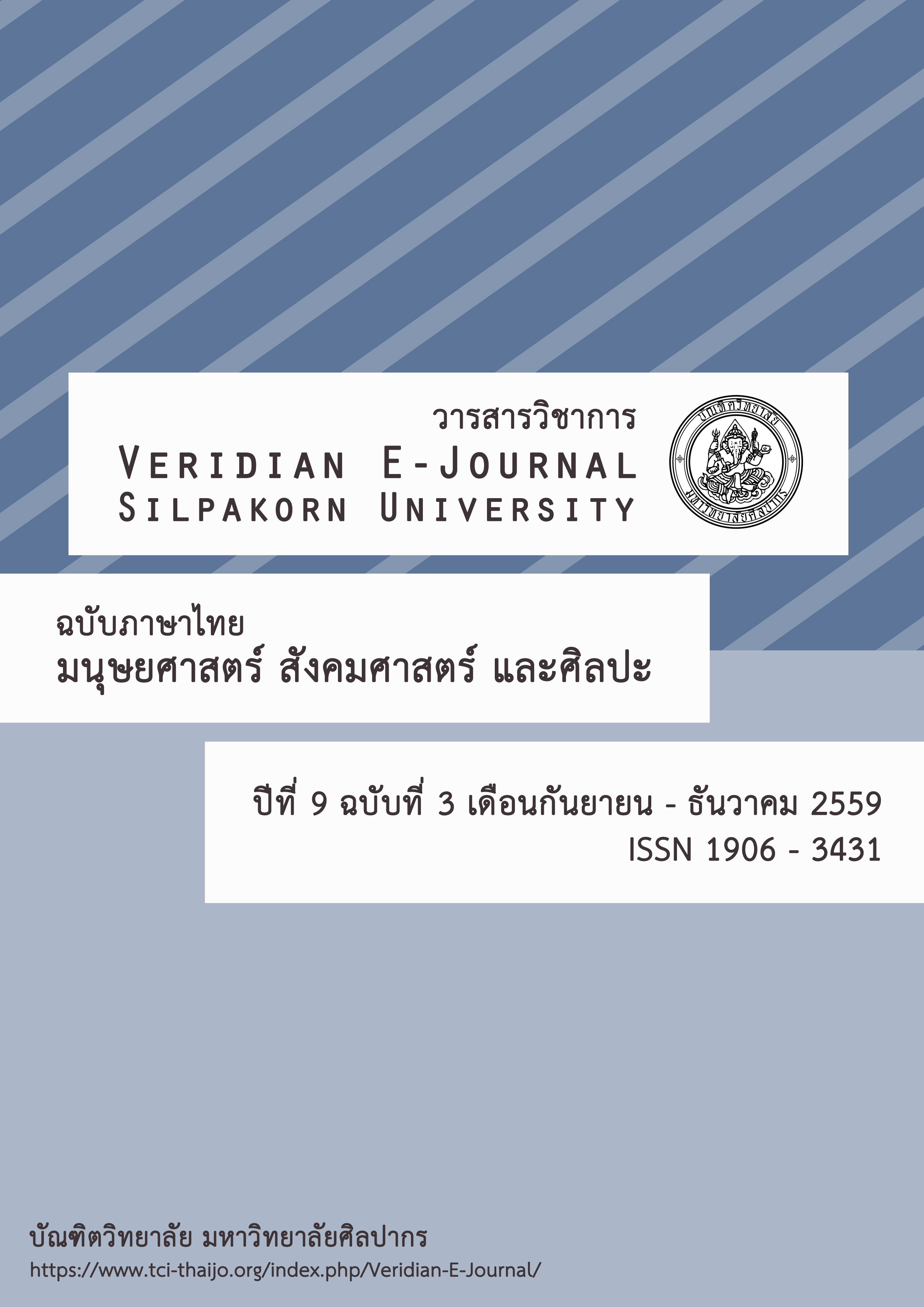การพัฒนารูปแบบการจัดการเรียนรู้แบบยืดหยุ่นสำหรับนักศึกษา มหาวิทยาลัยราชภัฏภาคตะวันออกเฉียงเหนือตอนล่าง
Main Article Content
Abstract
การวิจัยครั้งนี้มีวัตถุประสงค์ 1)เพื่อศึกษาสภาพปัญหาการจัดการเรียนรู้ในปัจจุบัน 2)เพื่อสร้างและพัฒนารูปแบบ 3)เพื่อประเมินและทดลองใช้รูปแบบ ตัวอย่างในการทดลองใช้รูปแบบเป็นนักศึกษาระดับ ปริญญาตรี มหาวิทยาลัยราชภัฏอุบลราชธานี ที่ลงทะเบียนเรียนในรายวิชาหลักสถิติ จำนวน 24 คน เป็นกลุ่มทดลอง และ 34 คนเป็นกลุ่มควบคุม ด้วยการสุ่มแบบอย่างง่าย เครื่องมือที่ใช้ ได้แก่ 1)แบบสอบถามสภาพการจัดการเรียนรู้ปัจจุบัน 2)รูปแบบและคู่มือการใช้รูปแบบ 3)แบบทดสอบความรู้ 4)แบบทดสอบการวิเคราะห์เชิงตัวเลข 5)แบบสังเกตพฤติกรรมความรับผิดชอบ และ6)แบบสอบถามความคิดเห็น และสถิติที่ใช้คือ สถิติพื้นฐาน ได้แก่ ร้อยละ ค่าเฉลี่ย ส่วนเบี่ยงเบนมาตรฐาน และสถิติทดสอบ MANCOVA
ผลการวิจัย พบว่า 1.สภาพปัญหาการจัดการเรียนในปัจจุบัน ได้แก่ ผู้สอนมีปัญหาด้านเวลา ด้านสถานที่หรือห้องเรียน และด้านอุปกรณ์ สื่อที่ใช้ในการจัดการเรียนรู้ รวมถึงผู้สอนมีการจัดการเรียนรู้ที่ มีความยืดหยุ่นอยู่ในระดับปานกลาง ผู้เรียนมีปัญหาด้านความรู้ ด้านการวิเคราะห์เชิงตัวเลข และด้านพฤติกรรมความรับผิดชอบ 2. รูปแบบการจัดการเรียนรู้แบบยืดหยุ่น ประกอบด้วย 1)หลักการ 2)วัตถุประสงค์ 3)กระบวน 4) เงื่อนไข และ5) แนวทางในการใช้รูปแบบ โดยรูปแบบมีองค์ประกอบ 3 ส่วน ดังนี้ ปัจจัยนำเข้า คือ มิติยืดหยุ่น 3 มิติ ได้แก่ 1)เวลา 2)เนื้อหา และ3)การจัดการเรียนการสอนและการจัดทรัพยากรเพื่อการเรียนรู้ กระบวนการ คือ ขั้นตอนกิจกรรม ได้แก่ 1) ขั้นแรก 2) ขั้นก่อนเรียนรู้ 3) ขั้นเรียนรู้ในชั้นเรียน และ4) ขั้นเรียนรู้หลังเรียน ส่วนผลลัพธ์ คือ ผลที่เกิดกับผู้เรียน ได้แก่ 1) ความรู้ 2) การวิเคราะห์เชิงตัวเลข และ3) พฤติกรรมความรับผิดชอบในการเรียนรู้ และผลที่เกิดจากผู้สอน คือ ความคิดเห็นที่มีต่อรูปแบบการจัดการเรียนรู้แบบยืดหยุ่น 3. รูปแบบการจัดการเรียนรู้แบบยืดหยุ่นมีคุณภาพมาก (u=4.43)และยังพบว่า กลุ่มทดลองมีคะแนนความรู้ และคะแนนการวิเคราะห์เชิงตัวเลขแตกต่างกับกลุ่มควบคุม อย่างมีนัยสำคัญทางสถิติที่ระดับ .01อีกทั้งกลุ่มทดลองมีพฤติกรรมความรับผิดชอบในการเรียนรู้แต่ละสัปดาห์ดีกว่ากลุ่มควบคุม และผู้สอนเห็นด้วยมากกับรูปแบบการจัดการเรียนรู้แบบยืดหยุ่น(u=4.43)
The objectives of this research were 1) to study the conditions and problems of present learning management 2) to create and develop the flexible learning model 3) to try out and evaluate the model. The sample was undergraduate students who enrolled in the Principle of Statistic course of Ubon Ratchathani Rajabhat University. The sample was divided into 2 groups: 1) A group of 24 undergraduate students defined as an experimental group 2) A group of 34 undergraduate students defined as a controlled group. The simple random sampling was applied to select the samples. The instruments of the research were 1) The present conditions of learning questionnaire 2) The flexible learning model and its handbook 3)The learning achievement test 4) Numerical Analysis test 5) Behavior observation form - Personal responsibility 6) Opinion survey questionnaire. The data were analyzed by using the basic statistics: percentage, mean, standard deviation, and MANCOVA.
The findings were as follows:1) The present learning conditions and problems: instructors had a time management problem since there were too many extracurricular activities for students, resulting in their schedules overlap; the teaching-learning equipment and media deficiency; the students had lack background knowledge to fully comprehend the present lessons and they did not have personal responsibility for learning 2) Flexible learning model consists of (1) Principles (2) Objectives (3) Process (4) Conditions (5) Methodology of application of the model. The model comprises 3 components: (1) Time (2) Content (3) Learning-teaching and resource management. Herein, Process means activity step including (1) First step (2) Pre-learning step (3) Learning in class step (4) Post-learning step. We found that students was influenced by the model in 3 aspects: knowledge, Numerical Analysis and Personal responsibility of learning, and the effect on instructors determined by the satisfaction of using the flexible learning model in their classes. 3) The students’ learning quality under Flexible learning model was higher than the students’ learning quality under traditional learning model. The result also showed that the numerical analysis test’s scores of the experimental group was higher than the controlled group are statistically significant level 0.01. In addition, the students of the experimental group showed more personal responsibility than those of the controlled group. The instructors’ satisfaction towards the flexible learning model was approved at high level (u=4.43).

